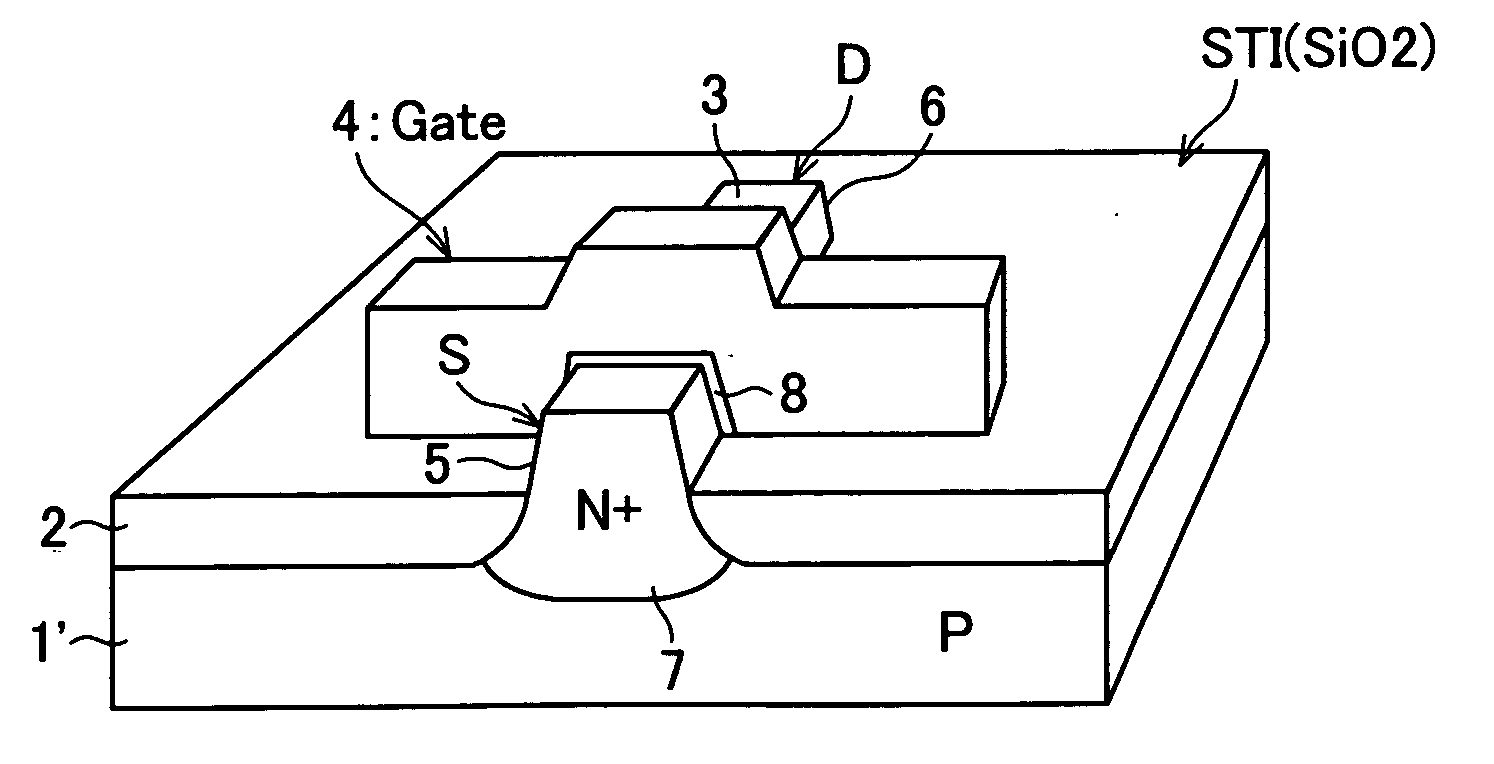Field effect transistor and fabrication method thereof
a field effect transistor and fabrication method technology, applied in the direction of transistors, semiconductor devices, electrical equipment, etc., can solve the problems of reducing the cost of conventional fin fet, reducing the length of the channel, increasing the concentration of impurity doping, etc., and reducing the thickness of the gate dielectric. , the difficulty of controlling the short channel effect and the off-state leakage current,
- Summary
- Abstract
- Description
- Claims
- Application Information
AI Technical Summary
Benefits of technology
Problems solved by technology
Method used
Image
Examples
first embodiment
[0045] A fin FET in a first embodiment of the present invention, as illustrated in FIG. 1, is a metal-insulator-semiconductor FET including fin sections 3 and 5 on a semiconductor (ex. silicon) substrate 1. The semiconductor substrate 1 has P-type conductivity. The fin sections 3 and 5 are formed in a fin shape so as to protrude outward from a surface of the semiconductor substrate 1. Any material that can be used for a semiconductor device may be a material of the semiconductor substrate 1. Examples of such a material other than silicon are germanium, silicon-germanium and gallium arsenide. Moreover, the fin has a band shape in a horizontal cross section parallel to the surface of the semiconductor substrate 1 and also has a band shape in a vertical cross section perpendicular to the surface of the semiconductor substrate 1. Each of the band shapes may have constant width from one end to the other end in a longitudinal direction of the fin or may have varied width from one end to t...
second embodiment
[0065] In a second embodiment of the present invention, as illustrated in FIG. 5, a source region section 5 and a drain region section 3 respectively have an extended source region section 5a and an extended drain region section 3a that are extended in a surface direction of the source region section 5 and the drain region section 3. A fabrication process of an FET of the second embodiment like this, as illustrated in FIG. 6(a) through FIG. 6 (c) and FIG. 7(a) through FIG. 7(c), is explained below. This fabrication process of an FET is performed on a bulk semiconductor wafer substrate 1′. This FET fabrication technique is preferably applicable for formation of a transistor array, such as a gate array, a memory device or the like particularly. Moreover, the bulk semiconductor wafer substrate 1′ is cut, according to need, at a final process so as to serve as the aforementioned semiconductor substrate 1.
[0066] The fabrication process starts with a method identical to the method for fo...
PUM
 Login to View More
Login to View More Abstract
Description
Claims
Application Information
 Login to View More
Login to View More - R&D
- Intellectual Property
- Life Sciences
- Materials
- Tech Scout
- Unparalleled Data Quality
- Higher Quality Content
- 60% Fewer Hallucinations
Browse by: Latest US Patents, China's latest patents, Technical Efficacy Thesaurus, Application Domain, Technology Topic, Popular Technical Reports.
© 2025 PatSnap. All rights reserved.Legal|Privacy policy|Modern Slavery Act Transparency Statement|Sitemap|About US| Contact US: help@patsnap.com



